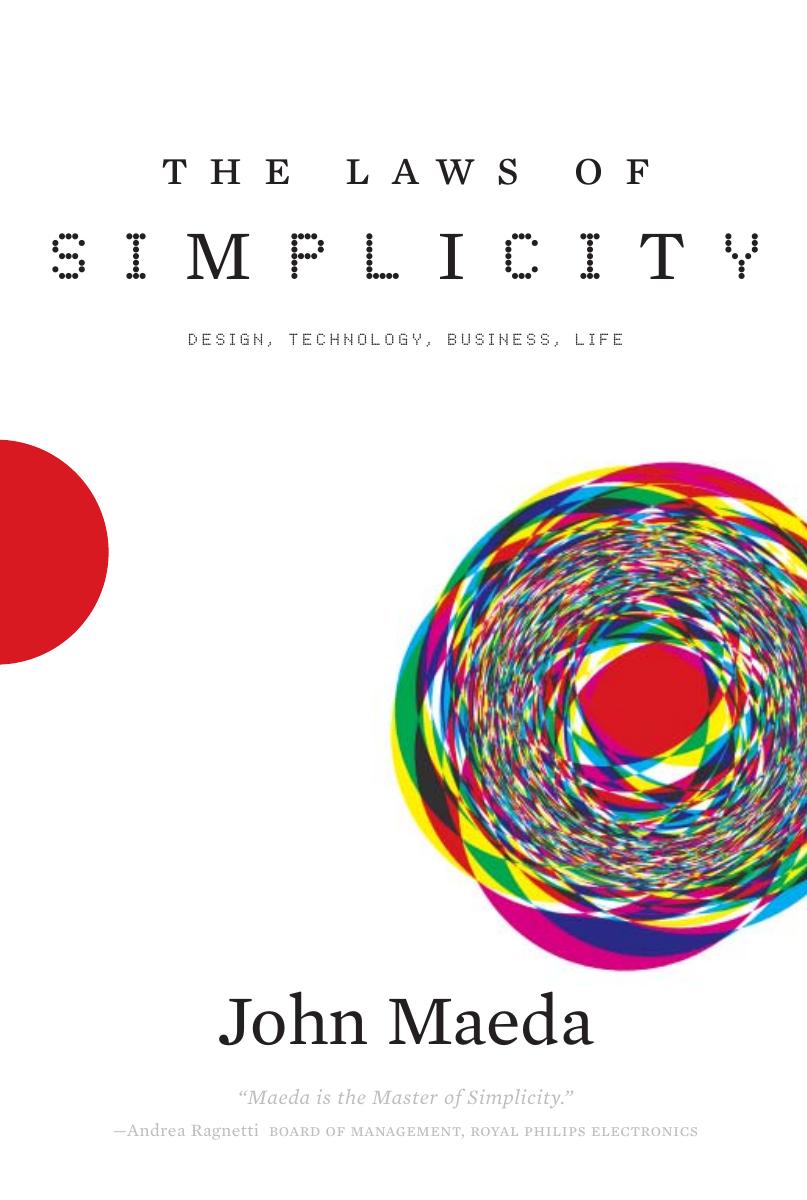The Laws of Simplicity by John Maeda

Author:John Maeda [SPi]
Language: eng
Format: epub, pdf
ISBN: 9780262134729
Publisher: MIT Press
TEA WITH TANAKA
I had the privilege of knowing the father of modern Japanese graphic design—Ikko Tanaka. (His first name in kanji means simply “one light.”) Once while living in Japan, I attended a private tea party at Tanaka’s residence together with the famed contemporary architect Shigeru Ban. The words “tea party” conjure up an image of finely woven doilies and petit fours, but the Japanese tea party is something simply sublime.
Tanaka had been a practicing student of chanoyu (chaw-noh-yoo), the tea ceremony, and we were his test subjects. It’s hard to imagine someone so masterful still being a student in his 70s, but in Asia there are many examples of this continuous cycle of learning. In the martial art of Karate, for instance, the symbol of pride for a black belt is to wear it long enough such that the die fades to white as to symbolize returning to the beginner state. Tanaka was the black belt of Japanese design.
The ceremony began, as is customary in some styles of chanoyu, with an examination of the tea-making implements. We passed around tea “cups” (more like deep bowls) to admire. If I remember correctly, I was assigned the cup from the 18th century that looked something like a horrible accident at the kiln. It was a deep and shiny black ceramic bowl where all of its external surfaces seemed to wrap unintuitively in the manner of a Salvador Dali painting. It was far from clear where I should place my lips to the bowl.
There I was at the house of Japan’s foremost master of Modernism sipping from something completely imperfect, of non-platonic geometry (no cylinders, spheres, cubes to be found), that lacked all recognizable features of a cup. Visibly it was completely imperfect—lacking the smooth and white surfaces of simplicity as commonly sold today in the dishware section of the Ikea shop.
For this reason, however, the other elements of Tanaka’s tools of tea came into view as pure perfection. Such as the lacquer tea-powder container from the 17th century where its matte black lid fit with its mate with the impossible precision of Lego blocks. Or else the subtle details of the wooden surfaces in his tea room that belied a lineage of tree that was nonexistent. The cup came to indirectly symbolize for me the essence of Japanese aesthetics, which strives for ultimate perfection. Its unexpected complexity made everything already impossibly simple, become even simpler.
Download
This site does not store any files on its server. We only index and link to content provided by other sites. Please contact the content providers to delete copyright contents if any and email us, we'll remove relevant links or contents immediately.
Wonder by R.J. Palacio(7732)
Unlabel: Selling You Without Selling Out by Marc Ecko(2981)
POP by Steven Heller(2884)
Hidden Persuasion: 33 psychological influence techniques in advertising by Marc Andrews & Matthijs van Leeuwen & Rick van Baaren(2778)
The Pixar Touch by David A. Price(2740)
Ogilvy on Advertising by David Ogilvy(2682)
Drawing Cutting Edge Anatomy by Christopher Hart(2677)
Slugfest by Reed Tucker(2416)
The Art of War Visualized by Jessica Hagy(2412)
The Curated Closet by Anuschka Rees(2385)
Stacked Decks by The Rotenberg Collection(2270)
The Wardrobe Wakeup by Lois Joy Johnson(2235)
365 Days of Wonder by R.J. Palacio(2233)
The Code Book by Simon Singh(2210)
Rapid Viz: A New Method for the Rapid Visualization of Ideas by Kurt Hanks & Larry Belliston(2195)
Tell Me More by Kelly Corrigan(2195)
Keep Going by Austin Kleon(2161)
Tattoo Art by Doralba Picerno(2083)
Tokyo Geek's Guide: Manga, Anime, Gaming, Cosplay, Toys, Idols & More - The Ultimate Guide to Japan's Otaku Culture by Simone Gianni(1946)
